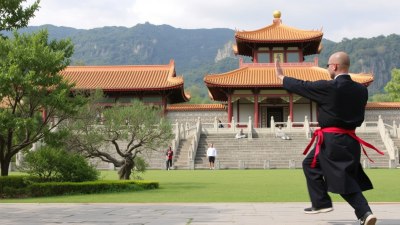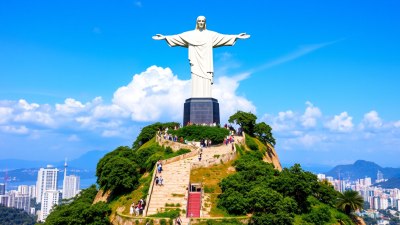Traveling to Learn Traditional Martial Arts
Explore the enriching experience of traveling to learn traditional martial arts from different cultures.

Traveling to learn traditional martial arts offers an invigorating blend of cultural immersion, physical challenge, and personal growth. For martial arts enthusiasts, stepping out of the dojo and into the world provides the unique opportunity to study different styles, philosophies, and techniques in the places they originated. Whether you’re drawn to the combat styles of East Asia or the traditional practices of Africa and the Americas, each destination promises its own set of lessons, experiences, and insights into the art of fighting. As a traveler, immersing yourself in local customs and training alongside master practitioners creates a richer understanding of martial arts beyond mere physical practice.
One of the most revered destinations for martial arts is Asia, particularly countries like China, Japan, and Thailand, where martial arts are deeply rooted in the cultural fabric. In China, for instance, the history of martial arts, or Wushu, dates back thousands of years and is significantly intertwined with Chinese philosophy, medicine, and even art. Visiting temples, schools, and historical sites while participating in classes can provide martial artists with a unique perspective on the discipline. Schools like the Shaolin Temple in Henan province offer immersive training programs where students can study Kung Fu while embracing the philosophies of Zen Buddhism.
Japan is another epicenter for martial arts, famous for disciplines such as Judo, Karate, Aikido, and Kendo. Each style possesses its own distinct history and techniques. Traveling to training camps or dojos in Japan allows learners to grasp both the physical and mental aspects of these martial arts. The rigorous training methods, often complemented by a structured curriculum, challenge students to hone their skills while respecting the traditions that underpin these practices. Attending tournaments or demonstrations can further inspire students on their martial arts journey.
Thailand is celebrated for its martial art, Muay Thai, also known as the “Art of Eight Limbs.” It utilizes punches, kicks, elbows, and knees, making it a comprehensive striking sport. Training in Thailand often involves not only practicing techniques but also developing a deep understanding of the sport's cultural significance. Many gyms throughout Thailand offer training packages where students can live, train, and immerse themselves in the culture. Routines often include early morning runs, hours of pad work, sparring sessions, and learning about traditional Thai medicine, all of which contribute to a well-rounded experience.
Traveling to learn traditional martial arts is not restricted to Asia. Africa boasts a variety of indigenous martial arts such as Capoeira in Brazil, which is a blend of dance, acrobatics, and music, conveying cultural stories from African slaves. Training in environments like Brazil provides practitioners with insights into the cultural expressions that accompany Capoeira, such as music and dance, which enrich the overall experience. Workshops often focus on the philosophy of Capoeira, teaching students to appreciate the rhythms and histories behind the art while improving their physical ability.
Another influential form is Brazilian Jiu-Jitsu (BJJ), which emphasizes ground fighting and submission techniques. Traveling to Brazil, where BJJ originated, offers practitioners the chance to train under world-renowned instructors and compete with grapplers of all skill levels. The warm culture and camaraderie among the martial artists contribute to the developmental experience. Classes in Brazil often include a mix of traditional training and modern techniques, offering an endless avenue for learning.
For those interested in Filipino martial arts, traveling to the Philippines allows for an authentic experience studying Eskrima or Arnis. These arts are known for their weapon techniques and include training in sticks, knives, and empty-hand combat. Schools are often located in community centers where practitioners learn self-defense and receive guidance from seasoned masters. Engaging with the local communities significantly enhances the learning experience, fostering friendships alongside lessons in martial arts.
Traveling to learn martial arts also offers the opportunity to attend international seminars and training camps featuring masters from various styles. These events convene martial artists from around the globe, creating a melting pot of techniques, philosophies, and connections. Attendees often gain insights into cross-training, which challenges their understanding of martial arts and introduces them to new ideas. The networking aspect of these gatherings can lead to lasting friendships and potential training opportunities in the future.
Additionally, martial arts travel experiences can adopt a retreat format, combining training with relaxation and wellness. Places like Bali or Thailand host retreats where martial arts enthusiasts can engage in both rigorous training and relaxation activities like yoga and meditation. These retreats encourage a balance between body and mind, which is essential to martial arts practice. Students return home renewed, having integrated physical training with mental and spiritual growth.
Preparing to travel for martial arts instruction requires careful planning to maximize the experience. Researching schools, training regimens, instructors, and geographical aspects will help set realistic expectations and understanding. It’s also crucial to look into accommodations and nutritional options that align with physical training needs. A holistic approach that considers aspects like diet and recovery can significantly influence training outcomes while abroad.
Language barriers may present challenges in some destinations, but they can also be part of the fun. Learning a few key phrases in the local language can enhance interactions and demonstrate respect for the culture. Many martial arts schools accommodate international students, using universal training language and collaborating with translators when necessary. Embracing communication challenges fosters patience and adaptability—attributes that are invaluable both in martial arts and in life.
As with all travel endeavors, safety should remain a priority. Researching health protocols, potential hazards, and local laws will ensure a secure training environment. Being aware of the cultural context and respecting local customs is essential for a fruitful interaction with the host community. Personal awareness regarding health insurance, emergency contacts, and fitness levels is important for enjoying a safe training journey.
Finally, documenting the journey through journaling, photography, or vlogging can enrich the experience and create lasting memories. Sharing adventures within the martial arts community can inspire others to consider their own travels for learning. Reflecting on the progression made during the trip encourages personal growth and provides motivation for ongoing training.
In conclusion, traveling to learn traditional martial arts serves as an enriching experience that transcends ordinary training. It integrates cultural immersion with physical discipline, offering a deeper appreciation for the arts while fostering personal development. Whether you seek to develop combat skills, learn about spiritual philosophies, or engage with communities, traveling opens a world of possibilities for martial arts practitioners. Traveling alone can reinforce self-reliance and resilience, while traveling with peers can strengthen bonds and create shared memories. Ultimately, the journey is a reflection of not just the physical skill acquired but the internal growth achieved through the pursuit of traditional martial arts.











